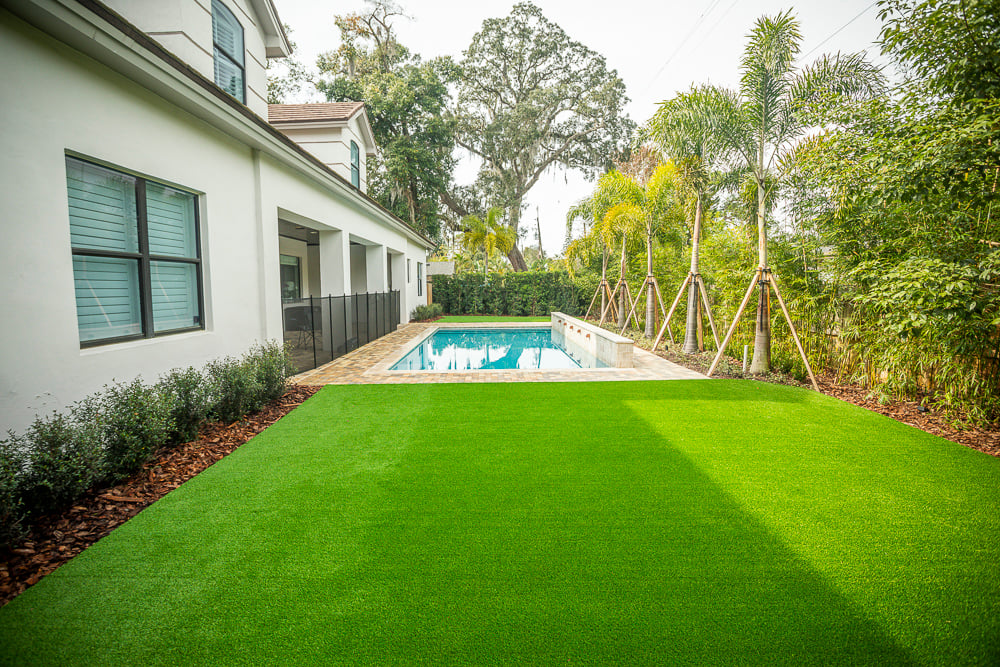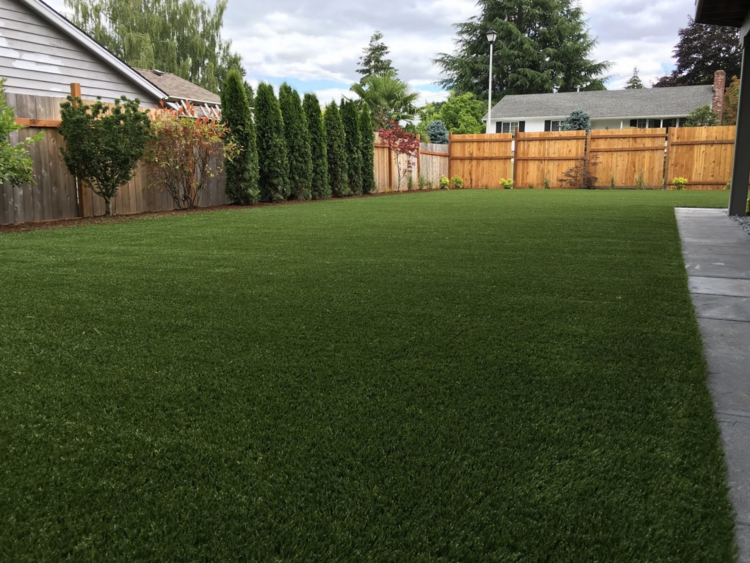Top-Rated Phoenix Turf Companies Focusing on Synthetic Grass Options
Top-Rated Phoenix Turf Companies Focusing on Synthetic Grass Options
Blog Article
Look Into the Environmental Perks of Opting for Artificial Grass Solutions
The adoption of man-made lawn solutions presents a compelling chance to deal with pressing environmental difficulties. By substantially lowering water use and minimizing the application of damaging chemicals, these choices not only advertise lasting landscape design yet additionally shield neighborhood ecosystems.
Water Conservation Benefits
Among one of the most substantial advantages of synthetic grass is its ability to conserve water. Traditional yard yards need substantial irrigation, especially in locations susceptible to drought or water restrictions. On the other hand, fabricated lawn does not need watering, considerably decreasing the overall need for water resources. This feature is specifically valuable in dry regions where water scarcity is a pushing issue.
By eliminating the requirement for regular watering, fabricated turf contributes to lasting landscape practices and assists minimize the environmental effect of too much water consumption. The conservation of water prolongs to the decrease of drainage, which can lead to dirt erosion and waterway contamination.
Furthermore, the installment of synthetic grass enables property owners and communities to allot water sources more efficiently, concentrating on necessary usages such as alcohol consumption water and agriculture. The shift in the direction of synthetic grass not just promotes liable water usage but additionally lines up with more comprehensive ecological goals intended at preserving all-natural resources.
As areas progressively focus on sustainability, the water conservation benefits of synthetic grass offer a compelling instance for its fostering in business and property landscaping tasks.
Lowered Chemical Usage
The transition to artificial turf significantly decreases the reliance on chemical therapies frequently utilized in natural grass maintenance. Conventional grass administration typically includes the application of herbicides, chemicals, and plant foods to promote growth and control pests. These chemicals can pose threats to human health, neighborhood wild animals, and the environment, contributing to dirt and water contamination.
In comparison, synthetic lawn eliminates the requirement for these hazardous materials. By minimizing the release of artificial compounds into the ecological community, synthetic grass advertises healthier soil and water systems.
In addition, the absence of chemical overflow related to synthetic grass installments aids safeguard neighborhood rivers from pollution, supporting water life and keeping biodiversity. Arizona turf. As communities progressively prioritize lasting practices, selecting man-made lawn offers a viable service that lines up with environmental preservation objectives. With this change, homeowner can take pleasure in lavish environment-friendly rooms without compromising ecological health, leading the way for a more sustainable future
Reduced Carbon Footprint

Additionally, the setup of man-made lawn can cause significant water preservation. All-natural lawns require considerable amounts of water for watering, which not only contributes to the carbon impact linked with water removal and therapy however likewise pressures neighborhood water sources. On the other hand, fabricated lawn needs very little maintenance, requiring no watering, thereby dramatically reducing water usage and its associated energy expenses.
Additionally, the longevity of synthetic grass contributes to its lower carbon influence. With a life-span of as much as 15 years or more, the need for frequent substitutes is reduced, leading to less waste and reduced power usage in manufacturing and throwing away standard turf alternatives. On the whole, fabricated grass presents a lasting alternative for ecologically conscious landscape design.
Habitat Preservation
Environment preservation is a crucial consideration in the argument over landscape design choices, specifically when contrasting synthetic lawn to natural yard. Natural grass yards typically call for considerable maintenance, consisting of the use of herbicides, chemicals, see this page and fertilizers, which can negatively influence neighborhood ecosystems. These chemicals can leach right into the dirt and rivers, damaging native flora and animals and interfering with regional environments.
On the other hand, fabricated grass offers an opportunity to lower the ecological impact of landscape design. By selecting artificial turf, house owners can minimize the interruption of all-natural environments related to standard grass care practices. Synthetic grass eliminates the requirement for unsafe chemicals, thereby securing neighboring wild animals and maintaining the integrity of surrounding ecological communities. Moreover, the setup of man-made lawn can lead to the conversion of former grass areas into more biodiverse landscapes, such as pollinator yards or native plant areas, which can support local wildlife.
Inevitably, the change to fabricated grass not only conserves water and reduces upkeep initiatives however also fosters an extra unified connection between go to this web-site human tasks and the natural surroundings, advertising environment preservation while doing so.
Long-Term Sustainability
Lasting sustainability is a crucial consider examining the advantages of synthetic grass over conventional grass yards. One of one of the most considerable benefits of synthetic grass is its resilience; it can last approximately 15-20 years with very little maintenance, whereas all-natural turf needs frequent reseeding and substitute. This longevity lowers the requirement for constant sources, such as water, fertilizers, and pesticides, which are essential for keeping a healthy turf lawn.
Furthermore, synthetic grass adds to a decrease in carbon exhausts connected with grass care devices. Traditional grass commonly require gas-powered mowers, leaners, and blowers, all of which contribute to air contamination. Turf installation phoenix az. In contrast, fabricated turf gets rid of the demand for such equipment, promoting a cleaner setting
Moreover, the production of synthetic grass increasingly uses recycled products, boosting its sustainability profile. As producers embrace eco-friendly methods, the environmental impact of fabricated turf remains to decrease.

Conclusion
The fostering of artificial lawn services offers considerable ecological benefits, consisting of considerable water conservation, minimized reliance on dangerous chemicals, and a lower carbon impact. Fabricated turf aids in protecting all-natural habitats by lessening land disruption and promoting long-lasting sustainability via the usage of durable materials. Jointly, these factors highlight the capacity of synthetic grass to contribute favorably to ecological health and provide a feasible choice to traditional landscaping methods in a significantly resource-conscious world.
In contrast, synthetic grass does not require watering, dramatically reducing the general demand for water resources. By lessening the launch of artificial substances into the ecosystem, man-made grass advertises much healthier dirt and water systems.
Furthermore, the installation of synthetic grass can result in significant water preservation. In comparison, artificial turf needs very little upkeep, needing no watering, therefore dramatically lowering water use and its associated energy prices.

Report this page